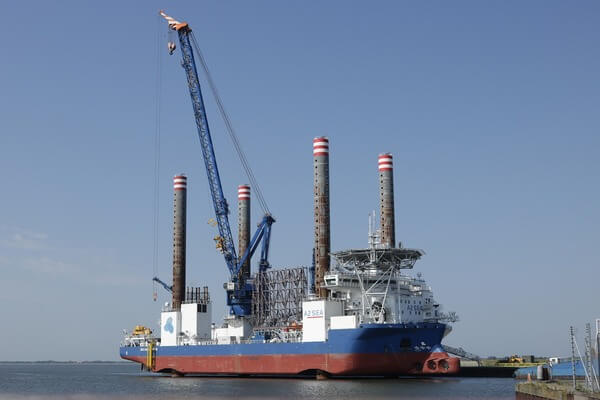News Release from windfair.net
Wind Industry Profile of
Floating industry taking up speed
According to the latest '2020 Global Offshore Wind Annual Market Report' by The Renewables Consulting Group (RCG), more than 200 GW of new offshore wind projects have been announced since the beginning of 2020. Among them, there are several floating wind power projects, but they are not yet available on a commercial scale.
A new report now analyses the technical challenges that floating offshore wind still has to face on the way to commercial operation. The findings are the result of the recent work by the Floating Wind Joint Industry Project (JIP), the world's leading research and development programme for floating wind turbines, led by the UK's Carbon Trust.
So far, the floating industry has lived in the shadows. Just 74 megawatts of floating turbines have been installed worldwide to date. Nevertheless, experts believe that this figure will rise to 126 MW by the end of the year, at the latest when Cobra Group's largest floating offshore wind farm to date in Kincardine, Scotland, will be completed.
Other competitive tenders for commercial-scale floating sites are currently underway in France and Scotland. Authorities in California have also recently announced their interest in this industrial sector. As the entire US West Coast is not suitable for conventional ground-based offshore wind farms due to heavy water depths the US Pacific rim states depend on the floating technology.
Sam Strivens, Programme Manager, Floating Offshore Wind at the Carbon Trust, therefore draws attention to the benefits of the initiative: "A series of pilot arrays and demonstration projects have helped to prove the technical feasibility of floating offshore wind. Several national governments have announced dedicated leasing and support for pre- and early commercial floating offshore wind deployment. The main challenge for the industry now is a commercial one. As we have seen in bottom-fixed offshore wind, our industry-led, collaborative R&D programmes have delivered significant cost reductions and de-risked technologies that accelerated commercialisation."

Not suitable for the assembly of floating wind farms: a jack-up vessel (Image: Pixabay).
That's why the Floating Wind JIP has been focusing on addressing potential challenges since 2016. Thus the new report identified the current fleet as a problem area. Conventional jack-up vessels, which are used to install conventional offshore wind farms, are no longer an option above a certain sea depth. Added to this is the permanent swell that maintenance vessels have to contend with when the turbines are afloat.
One option is to tow the turbines back to port for maintenance and service work. However, this depends on the distance to shore and the turbine storage facilities available there.
Now that the problems have been identified by the Floating Wind JIP, its members from industry and research want to actively address and fix them to ensure commercial operation as soon as possible.
- Author:
- Katrin Radtke
- Email:
- press@windfair.net
- Keywords:
- floating wind, industry, sector, policy, wind farm, offshore, jack up, fleet, vessel, tow, challenge, commercial scale, decarbonization


























